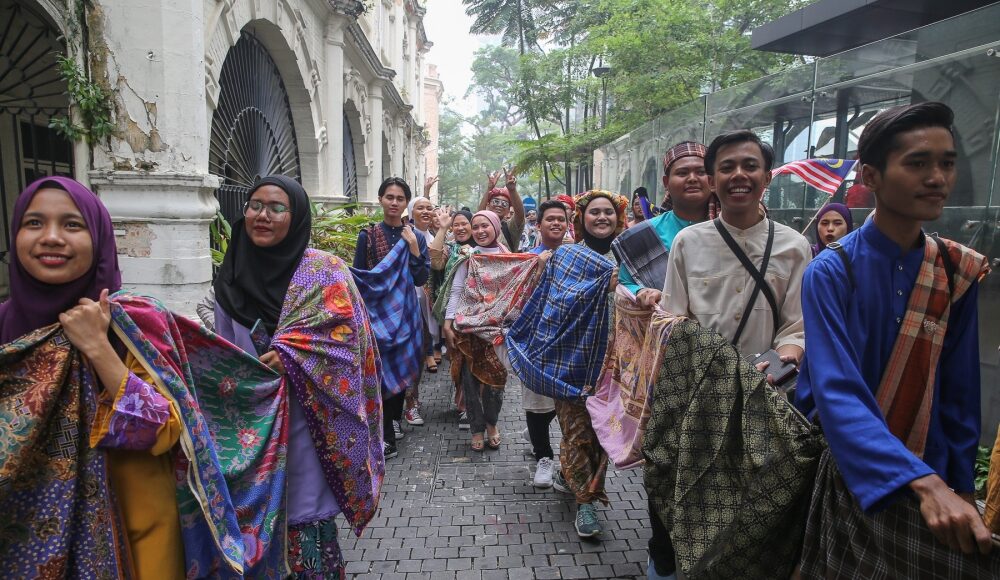JUNE 11 — In Malaysia, the problem of poverty has been discussed and debated for a long time.
Still, few people have approached it with the dedication and wisdom of the late Royal Professor Ungku Abdul Aziz.
Ungku Aziz was well-known for his scholarly endeavours and profound concern for the well-being of the rural poor.
His creative approaches gave Malaysia applicable and culturally appropriate means of comprehending economic inequality.
His creation of the “Sarong Index” is among the most noteworthy attempts to measure poverty, igniting discussions that are still relevant today.
An inspiration for social transformation
Ungku Aziz, also known as Ungku Abdul Aziz Ungku Abdul Hamid, was born in London in 1922 and studied in Malaysia.
From the beginning, his adventure was extraordinary. After deciding to pursue an academic career, Ungku Aziz immediately gained recognition for his compassion and progressive viewpoints.
He advocated for the economic advancement of Malaysians, paying special attention to the rural populace, who comprised a large portion of the country’s population in the early years of independence.
In addition to being respected as an academic, he was a social reform pioneer whose influence lasted long after his death in December 2020.
In addition to studying textbook economics, Ungku Aziz also examined the local and cultural markers that characterised Malaysian life to comprehend the extent of rural poverty.
In Malaysian development economics, he became a legend because his work laid the groundwork for socio-economic policies that influenced government programmes and provided genuine insight into rural poverty.
The Sarong Index: A creative metric
Ungku Aziz’s “Sarong Index” is among his most famous works. On the surface, it appears pretty straightforward.
The number of sarongs, a traditional Malaysian garment frequently worn in rural families, in a family is divided by the number of household members to determine the Sarong Index.
According to Ungku Aziz, the sarong was a concrete representation of material stability for rural people and an indication that went beyond simple income levels.
This index was quite valuable, particularly since Malaysia lacked sophisticated measures for assessing poverty and a robust infrastructure for collecting data.
According to Ungku Aziz, the quantity of sarongs in a home gauges the general well-being of Malaysians living in rural areas rather than just a measure of apparel.
A basic degree of comfort and stability was indicated when households had enough sarongs, which signified they had money to spend on things other than food.
On the other hand, the lack of several sarongs spoke to a lifestyle that failed to adhere to even the most fundamental cultural standards, suggesting a deprivation beyond mere material poverty.
A basic degree of comfort and stability was indicated when households had enough sarongs, which signified they had money to spend on things other than food. — Picture by Yusof Mat Isa
Transcending data: Cultural perspective on poverty
The distinctive feature of Ungku Aziz’s method was its consideration of cultural background.
Given that the sarong is more than simply clothing, the Sarong Index captured the social subtleties of Malay living, whereas many other poverty indices are quantitative.
When worn in the house, sarongs convey warmth, cosiness, and cultural identity.
By examining sarongs, Ungku Aziz could quantify cultural values, self-respect, and dignity in ways that traditional economic indices could not.
Since it reduced poverty to a straightforward yet relatable visual, this unusual indication struck a deep chord with decision-makers.
It spoke to those who recognised the importance of the sarong in daily Malay living without using complicated economic terms.
The capacity of Ungku Aziz to innovate in both economic theory and the real-world applications of social research was demonstrated by this method.
Developing national initiatives to reduce poverty
The Sarong Index may show Ungku Aziz’s wider contributions to Malaysia’s socio-economic policies.
His efforts to reduce poverty greatly influenced Malaysia’s development initiatives.
The Second Malaysia Plan, a governmental blueprint containing goals for economic growth, better education, and rural development, was formulated in the 1960s, largely thanks to Ungku Aziz’s views.
Through the Sarong Index, Ungku Aziz emphasised the significance of comprehending rural poverty in a comprehensive and context-sensitive manner, arguing that national development initiatives need to consider the cultural context of the areas they were intended to assist.
Additionally, his idea paved the way for rural co-operatives, which gave farmers in rural areas better economic possibilities, financial stability, and collective bargaining strength.
Ungku Aziz tackled structural poverty by encouraging cooperatives, which made it possible for the impoverished in rural areas to engage in the country’s economy more fully.
Ungku Aziz’s lasting influence
The Sarong Index illustrates how Ungku Aziz’s theories questioned conventional notions of poverty.
He measured poverty by considering cultural significance, dignity, and quality of life in addition to economic data.
Even today, the Sarong Index reminds us that poverty impacts every facet of human existence, not just a lack of money.
In this regard, generations of economists and politicians have been motivated by Ungku Aziz’s groundbreaking work to embrace cultural settings and think imaginatively about poverty.
His theories, which strongly emphasised social cohesiveness and local identity as key components of sustainable development, were innovative for their time.
As Malaysia continues to address poverty and injustice, Ungku Aziz’s teachings serve as a reminder of the importance of careful, context-driven social policymaking.
Future prospects: The Sarong Index’s current significance
Today, with Malaysia and other nations dealing with fast-changing socio-economic issues, the Sarong Index’s guiding principles are still applicable.
Given the growing cost of living, economic inequality, and the gap between rural and urban areas, Ungku Aziz’s analysis of poverty still has relevance for modern policymaking.
Using culturally relevant measures and locally relevant approaches, policymakers today may learn from Ungku Aziz’s approach to effectively measuring and addressing poverty.
Poverty is still closely linked to social conventions and cultural identity in rural communities, like those where Ungku Aziz spent his youth.
Despite its symbolic nature, the Sarong Index promotes a comprehensive approach to well-being that considers cultural continuity and community belonging.
Ungku Aziz’s observations serve as a timely reminder of the significance of culturally sensitive development planning at a time when local customs are under danger from globalisation and quick economic change.
Conclusion
In addition to being an economist, Ungku Aziz was a humanitarian who valued human dignity in the struggle against poverty.
His creation, the Sarong Index, offers a novel approach to gauging rural poverty while maintaining cultural sensitivity and demonstrates his profound knowledge of Malay society.
Through the Sarong Index, Ungku Aziz provided Malaysia with a cutting-edge instrument to view and combat poverty, which is still applicable despite the difficulties of today.
As Malaysia progresses, Ungku Aziz’s work serves as a lighthouse, reminding politicians, economists, and social activists that the development road must honour the cultures and identities it aims to elevate.
His legacy reminds us that reducing poverty concerns more than just statistics; it also concerns the community, humanity, and respect.
* Datin Seri Prof Dr Suhaiza Hanim Datuk Mohamad Zailani is the Director of the Ungku Aziz Centre for Development Studies, Universiti Malaya. She may be reached at [email protected].
** This is the personal opinion of the writer or publication and does not necessarily represent the views of Malay Mail.





